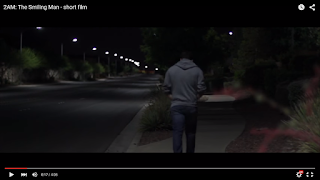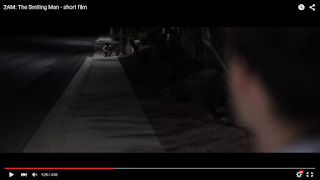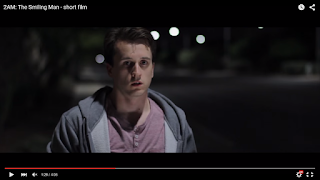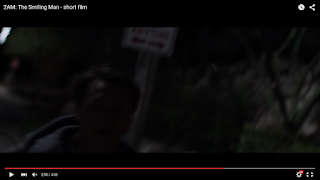 |
| My mood board |
My initial idea is based off a linear narrative, as it will build up to a climax at the end of the short film. This is to create suspense and mystery to the audience.
With the research I have collected, I have identified that The Black Hole | Future Shorts is the most popular existing horror/thriller short film as it has an outstanding 19,601,317 views, and 110,919 likes. From looking at the comments section, with my own knowledge, I have estimated the age range of people that have watched this short film. The age range is from around 16-25 as most of the comments are either jokes or reviews; and the gender is mainly males, I know this because I have looked at the names and profile pictures.



These two screenshots shows some of the comments left by YouTube users. As you can see, most of them are joke-related and the others are reviews or 'plot twists'.

In conclusion, I have found out that women are more into thrillers because they enjoy the thrill and have more of an adrenaline rush than men. Men tend to enjoy action films as it excites them. Men also like horror due to it being gory (blood, killing, gbh, etc)
With this research, it has helped me because I have chosen to make a thriller short film, as it has given me a range of ideas of what to do for my one minute short film. It also gave me an insight of what narrative to use (as thrillers and horrors have both linear and non-linear narrative). But I will be using a linear narrative, so it can build up and tell a story.
Pitch: The Box
One 17 year old girl called Lamara finds an weird looking box, takes it home and looks inside. Whilst eating a sweet from the box, she reads a note saying 'DO NOT EAT THE SWEETS'. By the time she could spit it out, she had already swallowed it. 5 minutes later, whilst trying to vomit it out, her eyes roll back and froth forms out of her mouth. She gets a flash forward of everyone being possessed, like her*. She regains consciousness and is no longer the same. When it becomes dark outside, she becomes possessed. The next day, she invites her friends over, and whilst sitting in a circle in her bedroom, she brings out the haunted box and gives each and every one of her friends 'the sweet'. In the end, they all become possessed. Just like her flash forward.
Production Requirements
Finance
For my one minute short film, I will be able to borrow a camera from the media department or I could use a mobile phone with great camera quality because it will not cost for it to be rented or borrowed. If I was to buy a good quality camera, the price of cameras varies so it will most likely be from over £90.00 to at least £40,000.
Time
I will use the equipment given from the college to shoot the short film and use a booking system to keep track of what pieces of equipment has been borrowed, and not to make any mistakes of equipment being misplaced or stolen.
Personnel
I will use call sheets to determine and decide which actors deserve what role in the pilot. The call sheets have the number of scenes there will be and what the scene names are. It also shows the location of where each scene will be filmed.
Facilities
To hire an editing suite it will be: for a dry hire, from £150 for half a day or £250 for a full day of editing. So the budget for this will range from £450 to £600. I will be using the Mac Suite in college because it is free for me to use, also, it has Final Cut X and it is accessible from 8am-5pm on Monday-Friday.
Materials
Copyright free music, also known as Royalty Free Music, allows the purchaser (us) to pay for the music license only once and to use the music for as long as we want to.
Paying for clearances is a good thing because it allows us to use and pay for footage, actors, radio stations (that are heard in backgrounds). It ranges from £50 upwards, so it will not cost much to use in the pilot.
Copyright free music, also known as Royalty Free Music, allows the purchaser (us) to pay for the music license only once and to use the music for as long as we want to.
Paying for clearances is a good thing because it allows us to use and pay for footage, actors, radio stations (that are heard in backgrounds). It ranges from £50 upwards, so it will not cost much to use in the pilot.
Locations
The main location for my one minute short film will be shot and based in my house. This is because it will be easily accessible for my crew, as we all do not live far from each other. Another location will be at a bus stop, as this is where one of my characters will find the box. I may need a permit from Lewisham Council to shoot the bus stop as it is government property.







































